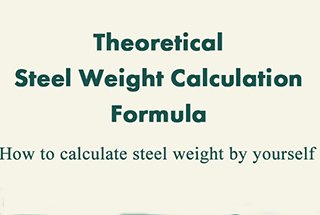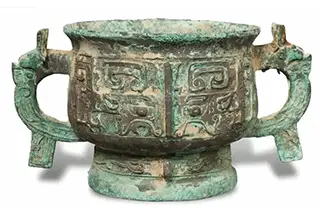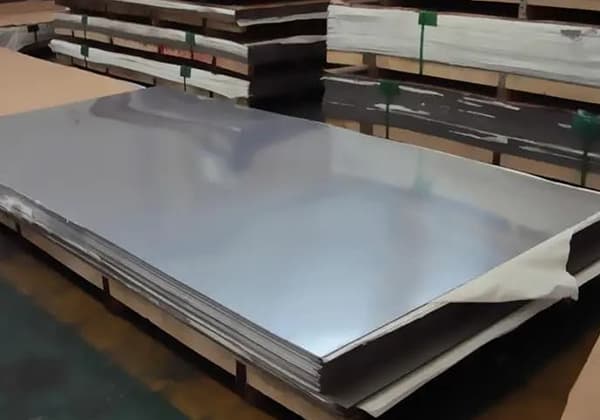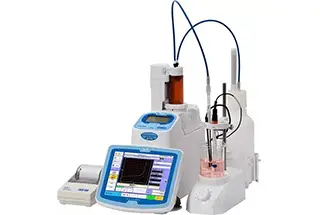
Have you ever wondered how the weight of gold is calculated? In this article, we’ll explore the fascinating world of gold measurement, from ounces to grams, and uncover the secrets behind accurate calculations. Get ready to learn essential tips and avoid common pitfalls in gold trading!

A Gold Weight Calculator is a specialized tool designed to accurately determine the weight and value of gold and other precious metals, such as silver and platinum. This calculator is essential in various industries, including jewelry making, investment, and manufacturing, as it provides precise measurements that are crucial for fair transactions and efficient material usage. The tool benefits users by ensuring accurate pricing, preventing financial losses, and optimizing resource allocation in crafting and fabrication processes.
Calculating the weight and value of gold is crucial for several reasons:
Inaccurate calculations can lead to significant financial discrepancies, undervaluation or overvaluation of assets, and inefficient use of resources, which underscores the importance of precise measurements.
Users of a gold weight calculator come from diverse backgrounds with varying needs:
The density of gold at room temperature is approximately 19.32 grams per cubic centimeter. This value may slightly fluctuate due to temperature changes, but it’s generally accepted that at 20 degrees Celsius, the density of gold is 19.32 g/cm³.
This gold weight calculator is based on a gold density of 19.3g/cm³. If the density of your gold is not this value, you can enter your own metal density in the metal density input box.
Furthermore, you can refer to the metal density table to find the corresponding density values. For more calculations on metal weight, you can use our metal weight calculator.
When individuals decide to sell gold items such as jewelry, coins, or bullion, it is crucial to determine their accurate value to ensure a fair transaction. Knowing the precise worth of gold items helps sellers negotiate better prices and avoid potential financial losses. For example, a person selling a gold necklace needs to know its exact weight and purity, along with the current market price, to receive a fair offer from buyers.
Accurate gold valuations are also essential for appraising items for insurance coverage or estate planning. Insurers and estate planners require precise figures to determine the worth of gold assets, ensuring they are adequately covered and documented. For instance, a family valuing gold heirlooms for an estate settlement needs to provide accurate weight and purity details to appraisers to establish the correct value of these assets.
The first step in calculating the gold value is determining the weight of the gold item. This can be done using a precise scale or a gold weight calculator. The weight is usually measured in grams or troy ounces. A troy ounce is a unit of weight equivalent to approximately 31.1 grams and is the standard measurement used in the precious metals market.
Gold purity is expressed in karats (K) or fineness. The karat system measures the proportion of pure gold in an alloy, with 24K representing pure gold. For example, 18K gold contains 75% pure gold and 25% other metals. The fineness system indicates the purity as parts per thousand; for instance, 585 fineness means 585 parts of pure gold per 1000 parts of alloy. Identifying the purity level is crucial as it directly affects the item’s value. For instance, if the market price of gold is $60 per gram, a 10-gram 24K gold piece would be valued at $600, while an 18K gold piece of the same weight would be valued at $450 due to its lower gold content.
The current market price of gold, also known as the spot price, fluctuates daily based on supply and demand factors. The spot price is the price at which gold can be bought or sold for immediate delivery. Accessing real-time market prices is essential for accurate valuation, and this can be done using various online tools and apps that provide live gold rates. For example, if the spot price is $60 per gram, a gold item weighing 15 grams with a purity of 18K would be valued based on the pure gold content, which is 11.25 grams (15 grams x 0.75). Therefore, its value would be calculated as 11.25 grams x $60 = $675.
To use a gold weight calculator, start by inputting the weight of the gold item in the appropriate units (grams or troy ounces). Next, select the purity level of the gold, either in karats or fineness. This information helps the calculator determine the amount of pure gold in the item.
Ensure the calculator you are using integrates real-time market prices for gold. This feature allows you to get the most accurate valuation based on the latest gold rates. Many calculators and apps offer this functionality, retrieving current prices from reliable sources.
Once the weight, purity, and market price are input, the calculator will provide the item’s value. This value represents the worth of the pure gold content in the item based on the current market price. For example, if you have a gold ring weighing 20 grams at 18K purity, and the current gold price is $60 per gram, the calculator will determine the value as follows:
By following these steps and using an accurate gold weight calculator, you can determine the precise value of gold items for sale or appraisal, ensuring fair and informed transactions.
Accurate gold weight calculations are crucial in crafting, especially in jewelry making and other gold-based projects. Precision ensures that the correct amount of gold is used, preventing material wastage and maintaining cost-effective production. For instance, a jewelry maker crafting a gold ring needs to know the exact weight of gold required to avoid unnecessary expenses and material loss. Similarly, artists and hobbyists working on gold sculptures or intricate designs must calculate the gold weight accurately to achieve the desired outcomes without overestimating or underestimating material needs.
The first step in calculating the required gold weight for a DIY project is identifying the shape of the gold object. Common shapes include sheets, wires, cylinders, and rondelles. Each shape has a specific formula for calculating its volume, which is then used to determine the gold weight.
Once the shape is selected, input the dimensions into the gold weight calculator. Here are the formulas for calculating the volume of different shapes:
After calculating the volume, the next step is to determine the mass. This requires knowing the density of the gold, which varies based on its fineness or purity level. The density of pure gold (24K) is approximately 19.32 g/cm³. The density decreases with lower purity levels.
Suppose you are creating a gold pendant with the dimensions:
Calculate the volume:
Assuming the pendant is made of 18K gold (density = 15.58 g/cm³):
Suppose you are making a gold wire bracelet with:
Calculate the volume:
Assuming the wire is made of 24K gold (density = 19.32 g/cm³):
Suppose you are creating a small gold cylinder for a sculpture with:
Calculate the volume:
Assuming the cylinder is made of 22K gold (density = 17.75 g/cm³):
When working with gold, consider the percentage of material wasted during melting and fabrication. For example, if the wastage rate is 5%, you need to account for this in your calculations. If your required gold mass is 23.37 grams, the total amount needed, including wastage, would be:
To estimate the total cost of the gold required, multiply the mass by the current market price per gram. For instance, if the market price is $65.56 per gram and you need 23.37 grams:
To minimize wastage during the crafting process, use precise cutting tools, recycle scraps, and practice efficient melting techniques. Accurate measurements and careful planning can significantly reduce material loss.
By accurately calculating the gold weight for your DIY projects, you can ensure efficient use of materials and proper budgeting, leading to successful and cost-effective crafting endeavors.
Understanding gold purity and weight conversions is crucial for various stakeholders, including jewelers, investors, and consumers. These concepts determine the value and quality of gold items, which is essential for making informed decisions in buying, selling, and appraising gold.
Gold purity indicates the amount of pure gold in an item, usually expressed in karats (K) or fineness.
Karats (K):
To calculate pure gold content in a karat-based alloy, divide the karat value by 24. For example, 18K gold is 18/24 = 0.75 or 75% pure gold.
Fineness:
Accurate weight conversions are essential for precise calculations in various units such as grams, troy ounces, tola, and pennyweight.
Common Units:
Grams to Troy Ounces:
Troy Ounces to Grams:
Grams to Tola:
Tola to Grams:
Grams to Pennyweight:
Pennyweight to Grams:
Gold weight calculators simplify the process of converting between units and understanding gold purity. By inputting the weight and selecting the desired unit, the calculator quickly provides conversions. Additionally, these calculators help users understand gold purity by converting between karats and fineness, ensuring accurate valuation and assessment.
Examples:
These tools enable users to make informed decisions, whether selling gold, appraising items, or working on DIY projects.
Accurately estimating the costs of gold fabrication is crucial for manufacturers, artisans, and businesses involved in the production of gold items. A gold weight calculator can significantly aid in estimating these costs by accounting for various factors, such as the weight and purity of the gold, fabrication processes, and current market prices.
Gold fabrication involves a series of processes that transform raw gold into various forms, such as sheets, wires, or castings, to create jewelry, decorative items, or industrial products.
Gold is melted at high temperatures to create a molten mass that can be shaped according to the desired design or application. This process requires precise temperature control to avoid overheating, which can lead to oxidation or loss of material. Common techniques include the use of induction furnaces and crucibles.
Gold is often alloyed with other metals, such as copper, silver, or zinc, to achieve specific properties, such as hardness, color, or durability. Alloying involves mixing pure gold with these metals in precise proportions to produce an alloy with the desired characteristics. Challenges include maintaining the homogeneity of the mixture and achieving consistent quality.
Molten gold is poured into molds to create predetermined shapes or designs, which can include jewelry pieces, ingots, or industrial components. Lost-wax casting and sand casting are popular techniques. Ensuring that the molds are free of defects and managing the cooling process to prevent cracks are critical steps in casting.
Gold is cut, shaped, or formed into various forms using tools, machines, or manual techniques, such as rolling, forging, or soldering. Rolling involves passing gold through rollers to achieve the desired thickness, while forging uses hammering techniques to shape the metal. Soldering joins pieces of gold using a filler metal with a lower melting point.
Gold items undergo surface finishing treatments, such as polishing, plating, or engraving, to enhance their appearance and durability. Polishing smooths the surface to a high shine, plating applies a thin layer of another metal, and engraving adds decorative patterns. Each finishing technique requires skill and precision to achieve the desired outcome.
Calculating the material costs associated with gold fabrication is essential for maintaining profitability and budgeting effectively. Key considerations include:
Gold weight calculators can help estimate fabrication costs by incorporating the following factors:
Users can input specifications for various gold shapes, such as sheets, wires, or cylinders, to calculate the required amount of gold based on the desired dimensions.
The calculator can determine the total material costs by multiplying the weight of the gold by the current market price per gram, taking into account the purity level of the gold.
Suppose a jewelry maker wants to create a gold ring with the following specifications:
The calculator would first determine the weight of pure gold in the ring:
Next, the calculator would calculate the total cost of the pure gold content:
Finally, the calculator would add any fabrication, finishing, or overhead costs to determine the total cost of producing the gold ring.
Businesses and artisans use gold weight calculators to streamline their operations and ensure accurate cost estimations. For example, a jewelry manufacturer might use the calculator to determine the cost of producing a new collection of gold necklaces, adjusting for different weights and purities. Similarly, an artisan crafting custom gold pieces can use the calculator to provide clients with precise cost estimates, ensuring transparency and trust.
Using a gold weight calculator for cost estimation offers several benefits, such as:
By incorporating these features, a gold weight calculator can help users accurately estimate the costs associated with gold fabrication, enabling them to maintain profitability and budget effectively.
The specific differences between the troy ounce and the avoirdupois ounce in international trade are mainly reflected in their definitions, uses, and weights. We can summarize as follows:
Definitions and Uses:
The avoirdupois ounce is a unit of weight, abbreviated as oz.av, mainly used for the measurement of non-precious metal commodities. However, the troy ounce is a unit of measure specifically used for the trading of precious metal commodities such as gold. This shows that the troy ounce is widely used in the international gold market, especially in the European and American gold markets.
Weight Differences:
There is a certain weight difference between the troy ounce and the avoirdupois ounce. Specifically, 1 troy ounce equals 1.0971428 times the avoirdupois ounce, which is approximately 31.1034768 grams. In contrast, the weight of 1 avoirdupois ounce is 28.3495 grams. This means that the troy ounce is slightly heavier than the avoirdupois ounce, which is very important for the trading of precious metals such as gold.
The main differences between the troy ounce and the avoirdupois ounce lie in their application fields (the former is mainly used for precious metals, while the latter is used for non-precious metals) and their weights (the troy ounce is slightly heavier than the avoirdupois ounce). These differences ensure the importance of accurate measurement for different types of goods in international trade.
To convert internationally used ounces to grams or kilograms for domestic market trading, one must first understand the conversion relationship between ounces, grams, and kilograms. The following conversion relationships can be established:
Based on this information, the following conversions can be made:
Converting ounces to grams:
Converting ounces to kilograms:
In actual trading, you can choose to convert ounces to grams or kilograms based on specific trading needs. If the transaction involves smaller weight units, you might prefer to use grams as the unit; if it involves larger weight units, you might prefer to use kilograms.
Also, considering that different countries and regions may have different customary usage of weight units, understanding and adapting to the common units of the local market is very important.
In practical applications, the common misconceptions or mistakes when calculating the weight of gold mainly include the following points:
Overlooking the variation in gold density:
The density of gold can vary due to changes in purity and temperature. At room temperature, the density of gold is approximately 19.29-19.37 grams per cubic centimeter. This means that if the weight of gold is calculated under different conditions without considering these changes, it could lead to inaccurate results.
Simplification of calculation methods:
In some cases, to simplify the calculation process, some simplified calculation methods might be adopted, such as directly estimating the weight of gold by multiplying the volume by a fixed density value. However, this method overlooks the fact that gold’s density changes with conditions, leading to potential errors.
Ignoring shape factors:
For non-standard shaped gold items (like gold coins), the calculation of their weight also needs to consider shape factors. For instance, the weight calculation formula for round gold coins needs to take into account factors such as radius and pi. Ignoring these factors can also lead to inaccurate results.








